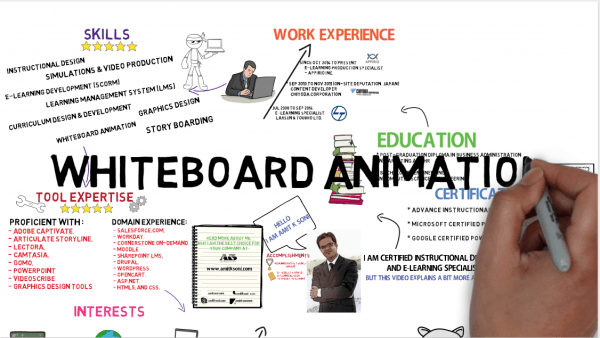How To Use Animation For Training And Strengthen Your eLearning Course
Is a motion graphic video really the most effective way to motivate learners? Is the investment of time and resources to produce an animated video ultimately worth it? The short answer is, we don’t know. Studies comparing static graphics vs. animations in eLearning have shown mixed results. However, there is strong evidence to support several best practices for using animation for training.
Best Practices For Using Motion Graphics And Animation For Training
1. Keep It Simple
One danger of using animations is overloading your audience with fast-paced, highly visual, content-dense material. There’s only so much information the human brain can process at a time. Using images with reduced realism (for example, trading stock photography for illustrations, or switching a complex diagram to a simplified line drawn version) will help learners more easily comprehend and retain training content.
2. Give Learners The Option To Replay
One of the greatest strengths of web-based training is its ability to let learners personalize and self-pace their learning experiences. You can optimize this strength by chunking animations into short, focused training on a specific topic, then providing an option for learners to replay animations as many times as needed. Not only will learners use this feature to ensure they understand the material in their initial training experience, it’s likely that learners will be more inclined to revisit the training material for future performance support or quick training refreshers.
3. Pair It With The Right Content
Animation really shines when it’s used to demonstrate complex processes, reveal things not visible with the naked eye, or make information more memorable. Let’s imagine that you’re building employee onboarding for a company that sells high speed internet. If you needed to show your learners how the internet delivers digital content instantly to millions of devices across the globe, an illustrated animation could be a perfect solution. However, if you needed to show a new internet sales employee how to conduct a meeting with a client, you’d be much better served with live video, audio, or even text-based scripts that model best practices. Learn more about when to use live video vs animation here.
4. Use Audio To Maximize Working Memory
While it’s true that all humans have a limited capacity for ingesting new information, animation maximizes this capacity by delivering information in two ways: Auditory and visual. This two-channel delivery system boosts the amount of content learners can encounter before reaching maximum load for working memory. While it’s important to not abuse this advantage (see tip #1), it is possible to achieve greater results with less seat-time using animation.
3 Common Mistakes In Using Animations And Motion Graphics And How To Avoid Them
In addition to following best practices, beware of these common mistakes Instructional Designers frequently commit when using animations and motion graphics in eLearning courses.
1. Too Much Text
Heavy use of text on the screen in animations or motion graphics can distract learners from the main concept. Worse still is when verbatim text appears on the screen while a narrator reads the text aloud. Avoid splitting the attention of the learner by using audio narration and only showing text on the screen to highlight key points. For learners who prefer or require it, a transcript or closed captioning can be a secondary option.
2. Unfocused Priorities
Animations, by nature, have a lot of moving parts. Added characters, background music, complex movements and transitions all help make the content engaging. However, with so much going on, learners might miss the main point, or struggle to identify key concepts. Use visual cues to highlight the primary objective of the animation and help learners prioritize what to remember.
3. Ignoring Your Audience
With the many tools and resources available to create animations and motion graphics, it can be easy to get carried away. While a cartoon puppy or curlicue font might be a temptation when you’re storyboarding your motion graphic, consider the unique characteristics of your audience and what style or voice would best engage them in the experience. What would feel most authentic to them? What stories, characters, humor, or voice would best match the environment and attitude of your learners? While it’s okay to be creative, going too far in a direction that feels immature or inauthentic to your audience will drastically impact the effectiveness of your animation.
Final Word
While using animations aren’t a perfect solution for all training, they offer a variety of compelling strengths. By pairing animations with the right content, keeping them simple and concise, and using audio and text in a way that optimizes working memory for your learners, animations can provide an engaging and effective medium for learning.








